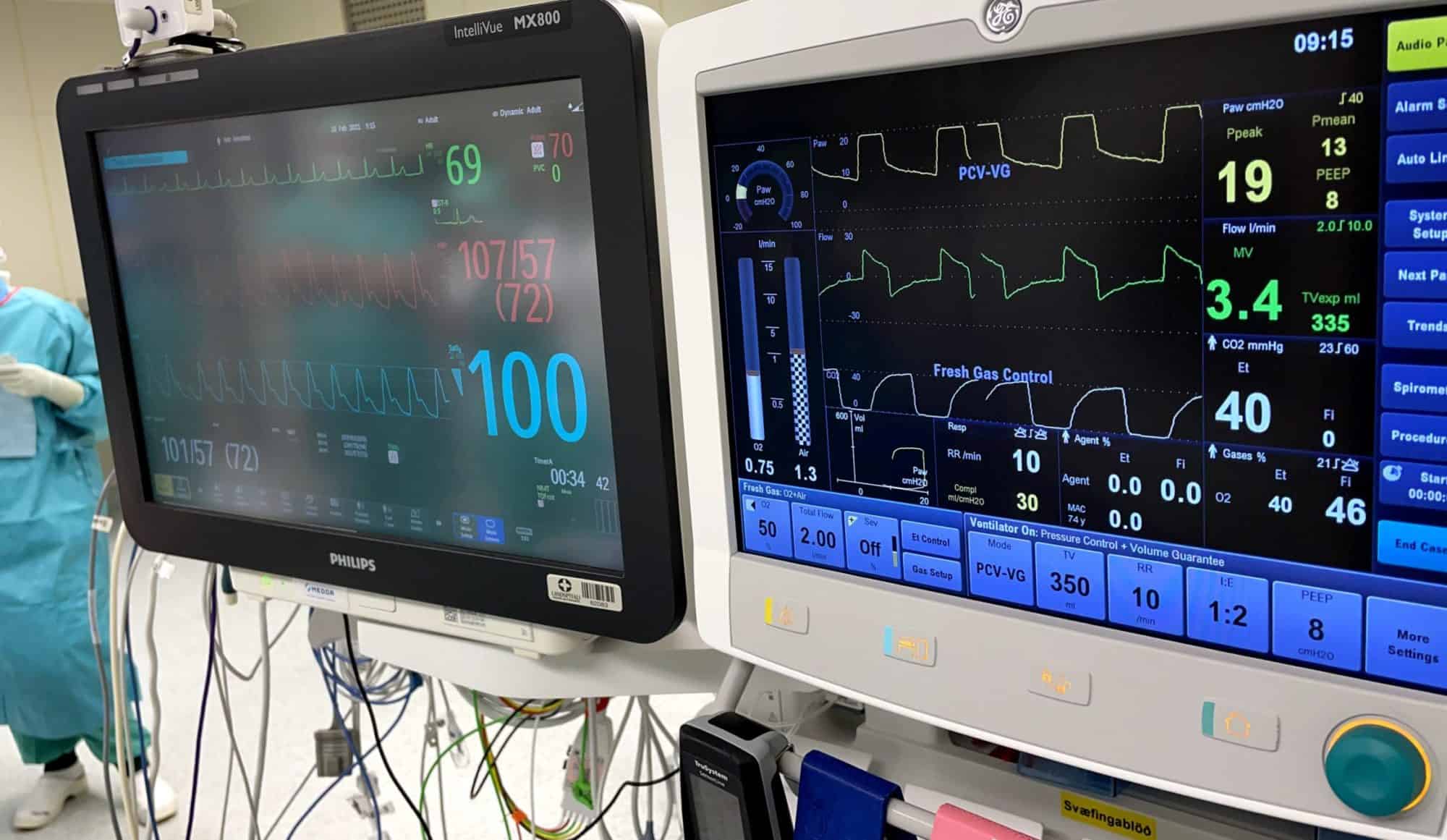Perioperative medicine – Core Learning Outcomes
This unit of training is intended to run in parallel with other units of training and is not designed to be undertaken as a standalone dedicated unit. The learning outcomes are applicable to all patients and will be achievable during clinical practice whilst undertaking the other units of training. However, Perioperative Medicine elements remain within the obstetric and paediatric units of training as these elements are less transferable to other areas of anaesthesia.
Learning outcomes:
* Explains the main patient, anaesthetic and surgical factors influencing patient outcomes
* Describes the benefits of patient-centred, multidisciplinary care
* Delivers high quality preoperative assessment, investigation and perioperative management of ASA 1-3 patients for elective and emergency surgery with emphasis on the perioperative management of co-existing medical conditions
* Delivers high quality individualised anaesthetic care to ASA 1-2 [E] patients, focusing on optimising patient experience and outcome
* Plans and implements high quality individualised post-operative care for ASA 1-2 [E] patients
Knowledge
- POM_BK_01 Describes the importance of comorbid disease in the planning and safe conduct of anaesthesia
- POM_BK_02 Describes the role of ‘do not resuscitate’ procedures
- POM_BK_03 Describes the effects of acute and chronic disease on patient outcomes after surgery
- POM_BK_04 Describes the requirements for preoperative investigations including indications for specific tests
- POM_BK_05 Interprets fundamental preoperative investigations
- POM_BK_06 Describes the adjustments needed to provide anaesthesia for the following patient groups: the elderly, pregnant women, patients with cognitive impairment, patients with chronic pain, and substance misusers
- POM_BK_07 Recounts implications of lifestyle factors such as smoking, alcohol intake and substance abuse on patient outcomes
- POM_BK_08 Discusses the management of concurrent medication in the perioperative period
- POM_BK_09 Describes thromboprophylaxis in the perioperative period
- POM_BK_10 Describes methods of risk assessment and stratification relevant to the provision of perioperative care
- POM_BK_11 Describes methods of patient optimisation which reduce risk in the perioperative period
- POM_BK_12 Describes how integrated perioperative care pathways in primary and secondary care affect patient outcomes
- POM_BK_13 Describes specific organisational interventions which improve patient outcomes (e.g. care bundles, enhanced recovery pathways)
- POM_BK_14 Describes the legal and ethical principles for obtaining informed consent in adults and the correct processes for patients who are unable to consent
- POM_BK_15 Describes the legal and ethical considerations for determining mental capacity
- POM_BK_16 Explains how patients requiring emergency surgery may differ from those presenting for elective surgery in terms of physiology, psychology and preparation
- POM_BK_17 Describes optimal perioperative fluid and feeding regimes
- POM_BK_18 Describes the impact of nutritional status on patient outcomes
- POM_BK_19 Describes the effects of ethnicity on physiology
- POM_BK_20 Describes risks and benefits of different anaesthetic techniques including their effect on early mobilisation and restoration of function
- POM_BK_21 Describes the effect of perioperative analgesia on patient outcome
- POM_BK_22 Describes strategies to minimise the risk of infection in the postoperative period
- POM_BK_23 Describes the effect of hypothermia on patient outcome
- POM_BK_24 Develops an effective patient-specific strategy to minimise post-operative nausea and vomiting
- POM_BK_25 Lists the risk factors for postoperative cognitive dysfunction
- POM_BK_26 Recalls principles of advanced haemodynamic monitoring
- POM_BK_27 Describes perioperative fluid management strategies, with reference to maintaining homeostasis
- POM_BK_28 Explains the indications for the use of blood products and describes the effective management of major haemorrhage
- POM_BK_29 Describes the consequences of failing to maintain normal biochemical parameters, e.g. acid-base balance, blood glucose
- POM_BK_30 Describes the consequences of postoperative malnutrition
- POM_BK_31 Describes a patient-centred approach to postoperative analgesia and demonstrates understanding of the importance of providing adequate analgesia in the context of perioperative care
- POM_BK_32 Describes the indications for Critical Care admission postoperatively
- POM_BK_33 Describes the components of a safe and effective immediate postoperative plan (e.g. oxygen therapy, frequency and nature of observations, antibiotic prescription, thromboprophylaxis, management of glycaemic control etc.)
Skills
- POM_BS_01 Conducts a comprehensive preoperative assessment in the outpatient clinicShow detailsPOM_BS_02Assesses patient suitability for day case admission
- POM_BS_03 Evaluates co-morbidity in ASA 1-3 patients
- POM_BS_04 Initiates optimisation where appropriate
- POM_BS_05 Organises appropriate special investigations
- POM_BS_06 Makes appropriate referrals to other specialties when required
- POM_BS_07Works in a multi-professional team and ensures effective communication with other members
- POM_BS_08 Communicates anaesthetic options with patients or surrogates effectively
- POM_BS_09 Synthesises relevant information to develop a safe anaesthetic plan, taking the patient’s wishes into consideration
- POM_BS_10 Treats all patients with respect and compassion, especially those with particular physical, psychological and educational needs (See Annex A, Domain 10 of CCT in Anaesthetics, 2010)
- POM_BS_11 Uses operating theatre safety checklists effectively (at the appropriate time, avoiding distraction and engaging the full team)
- POM_BS_12 Administers intravenous fluids and blood products appropriately
- POM_BS_13 Uses non-invasive and invasive monitoring appropriately
- POM_BS_14 Employs effective techniques to minimise the risk of aspiration of gastric contents in at-risk patients
- POM_BS_15 Employs effective strategies to maintain normal body temperature intraoperatively
- POM_BS_16 Recognises limits of competence and seeks advice where appropriate when managing of postoperative complications
- POM_BS_17 Plans the transition from intravenous to enteral hydration, nutrition and analgesia where appropriate
- POM_BS_18 Manages postoperative nausea and vomiting effectively
- POM_BS_19 Manages coexisting disease and medications in the immediate postoperative period in ASA 1-3 patients
- POM_BS_20 Recognises common anaesthetic and surgical complications
